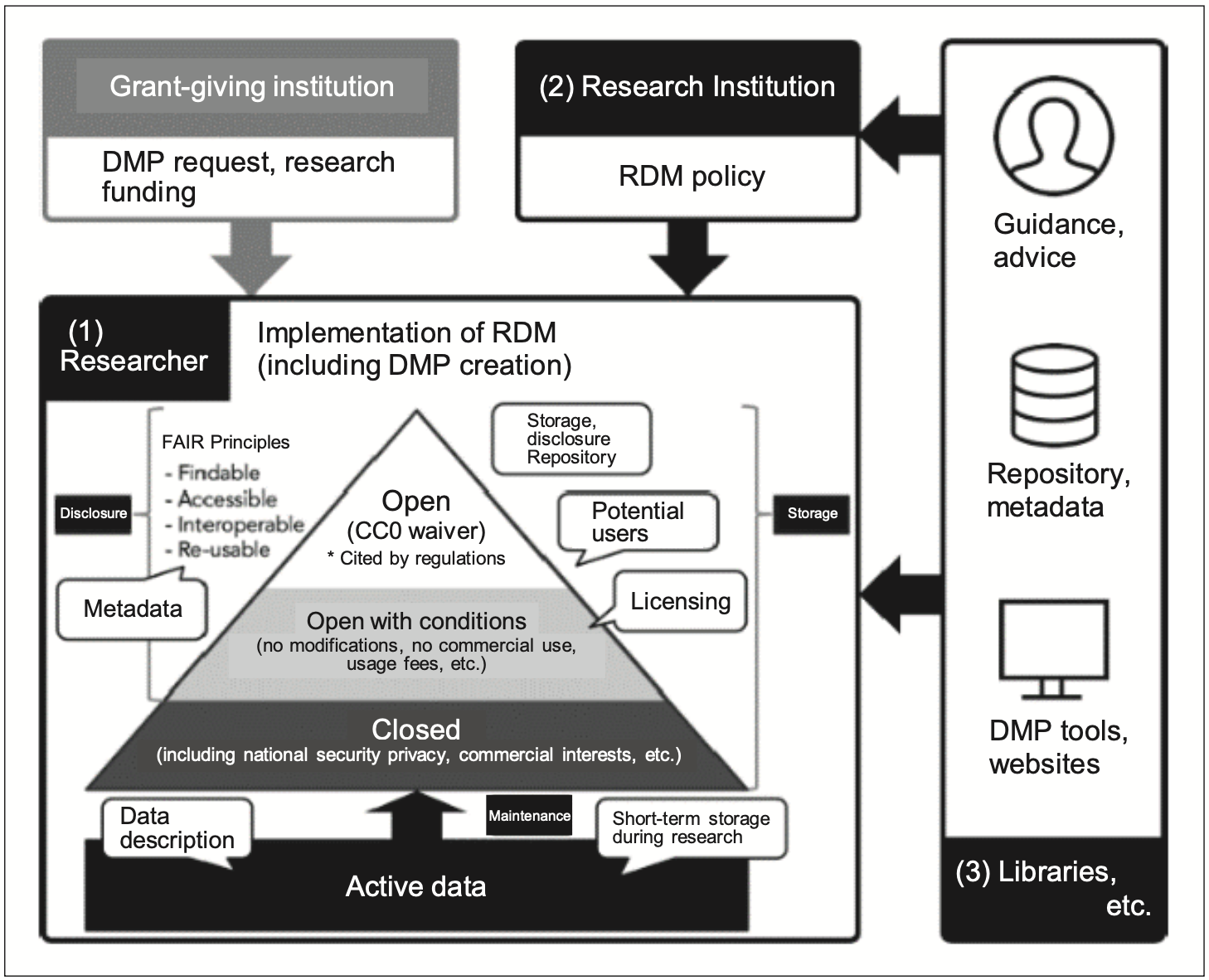RDM Practices and Benefits #
Getting Started with RDM #
As mentioned in the overview, Research Data Management (RDM) refers to researchers considering and putting into practice the following:1)。
- Developing a research data management plan (DMP)
- Daily handling of data during research
- Long-term data arhive after research
In some research fields, there’s already an established consensus on RDM, and checklists for research data that should be preserved might exist. For immature or developing fields, however, discussions will likely ensue on whether existing data preservation standards can be applied to their specific needs. The first step in RDM is for researchers themselves to consider what data should be preserved from the ever-increasing volume of daily research data, along with preservation periods, locations, and methods based on the field and data type.2)。
Research data are diverse and can include research field, level, type, origin and format #
- Data level (raw data, processed data, etc.)
- Data type (experimental data, observation data, etc.)
- Data origin (by-product of a project, result of project, etc.)
- Data format (numbers, images, text, etc.)
Decide which data should be stored. (From the perspective of research fairness and reproducibility as well as reusability)
Benefits for Researchers #
RDM is an important part of responsible research, and at the same time, it offers the following benefits for researchers themselves and among researchers:
-
Increase your research impact
-
Reduce data analysis time through proper management
-
Long-term (and perpetual) data preservation and maintenance of data integrity
-
Meet funder requirements and enhance competitiveness for grants
-
Facilitate new discoveries, effective sharing, and reuse
-
Support open access
-
Contribute to utilization by future generations of researchers
Furthermore, appropriate RDM also helps academic institutions understand and strengthen their research capabilities. Because of this, it’s becoming standard for institutions to establish the necessary environment and provide support.4)。
RDM and Stakeholders #
- RDM implementation by researchers
- RDM policies by research institutions
- Support for RDM by libraries and other institutions

Fig: Stakeholders for RDM5)
Leaflet #
These leaflets outline the essentials of research data management, beneficial for both researchers and the university. Please use them for internal promotion within the university.
(Kyoto University Library Network, Last updated: April 2023)
- For A4 use (only in Japanese)
- Print on A4 double-sided, or print as a “booklet” on A3 paper.
- Fold in half (front and back) (only in Japanese)
- If you print on A3 paper, specifying double-sided (short-edge binding) and landscape orientation, it will become an A4-sized pamphlet when folded in half.
References #
- JPCOAR RDM Training Tool
- 宮田怜「どの研究データを保存すべきか:英・Jiscによる調査レポート」
- The benefits of research data management cited by international academic institutions for researchers are consistent.
- AXIES, Recommendations for Research Data Management in Academic Institutions
- Ui Ikeuchi, Series: Current trend of open science: Research Data Management (RDM)-Goals and strategy

